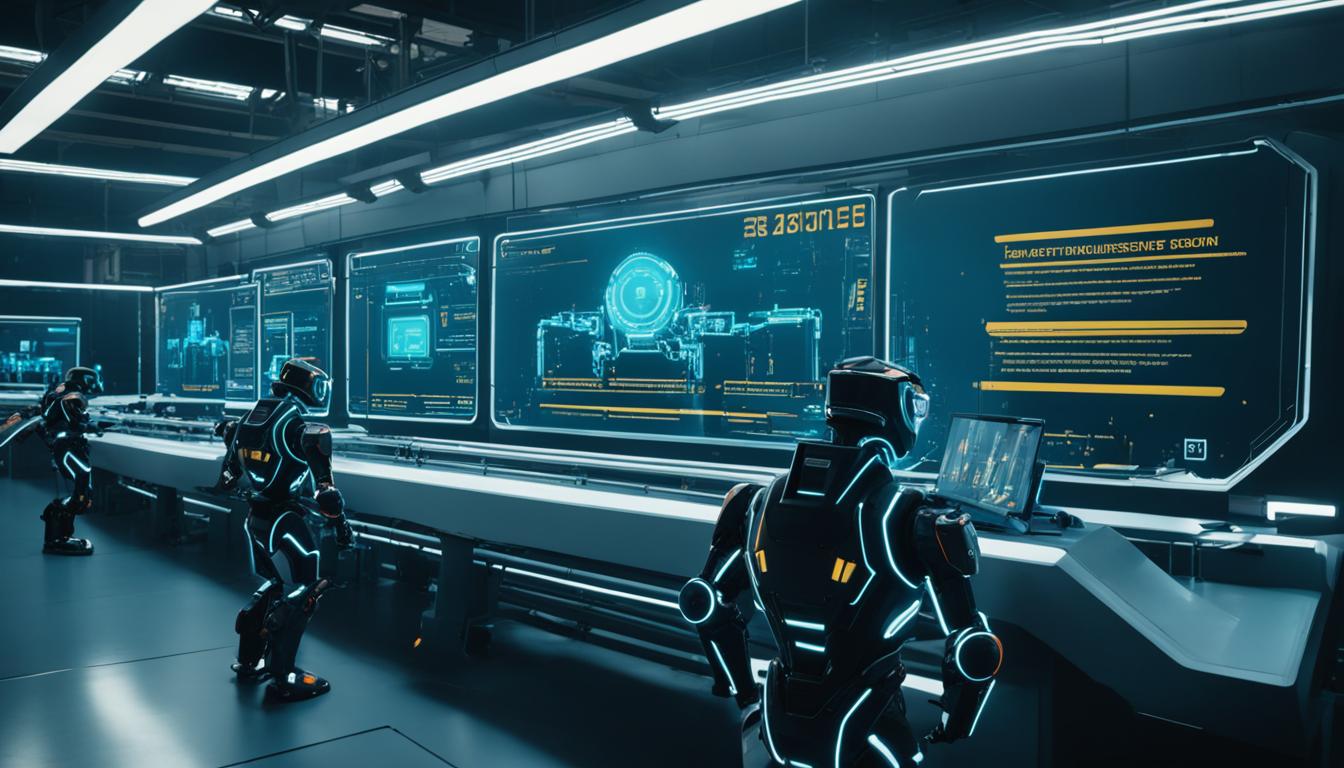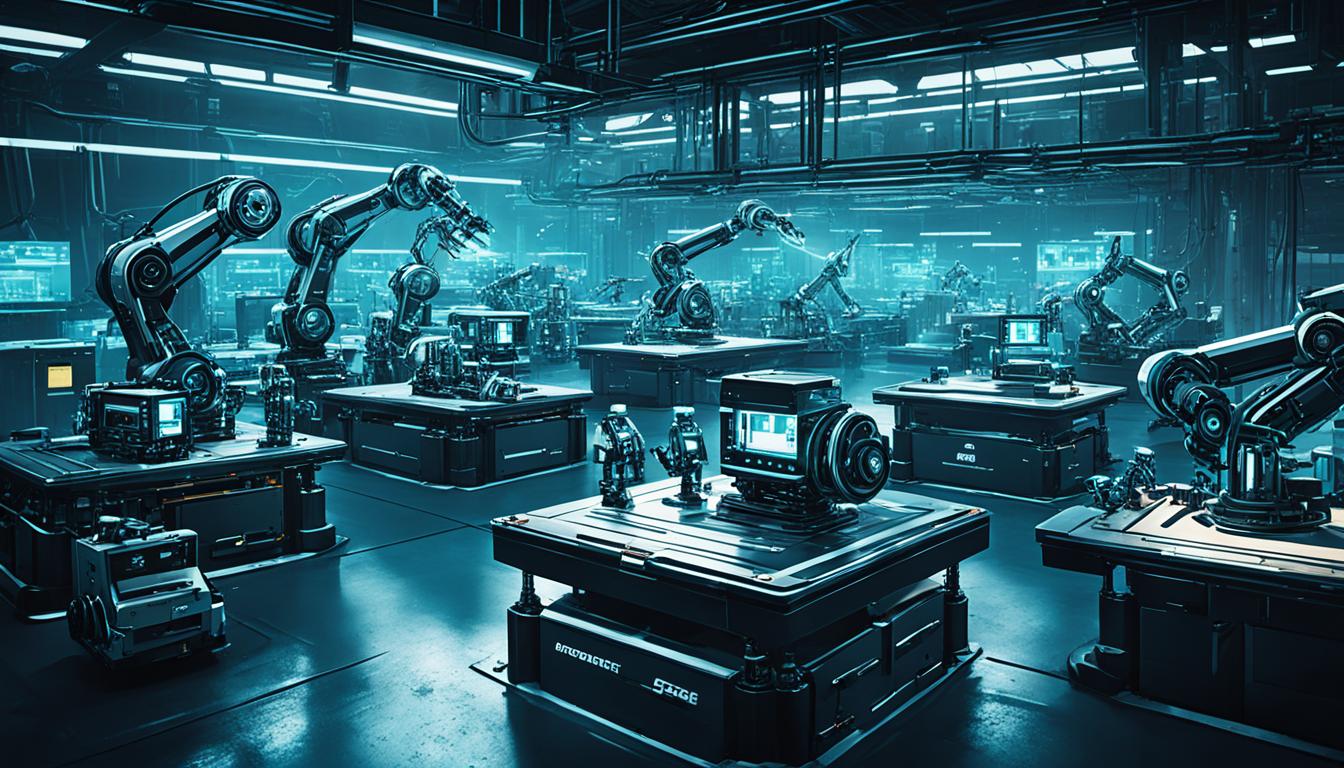
As you navigate the rapidly evolving manufacturing landscape, the question of how advancements in robotics will shape the industry by 2025 is one that demands your attention. The rise of industrial automation, robotic assembly lines, and smart factories is poised to revolutionize the way you approach production, improve human-robot collaboration, and enhance predictive maintenance. With the integration of machine learning in manufacturing and the adoption of Industry 4.0 technologies, the future of manufacturing is set to be defined by increased efficiency, flexibility, and resilience.
Key Takeaways:
- The growing demand for efficiency and productivity in the manufacturing sector is driving the rise of industrial robotics.
- Robotic automation can perform repetitive tasks with precision, leading to higher output and reduced errors.
- Advancements in AI and machine learning are enabling robots to adapt to new situations and make intelligent decisions.
- Robotics and automation are transforming supply chain management, with real-time data analysis and optimization.
- The integration of robotics and automation is revolutionizing various industries, including healthcare and manufacturing.
The Rise of Industrial Robotics
The rapid advancements in industrial automation are transforming the manufacturing landscape, fueling increased efficiency and productivity across the industry. As companies seek to maintain a competitive edge, the integration of industrial automation, robotic assembly lines, and smart factories has become an integral part of their strategy.
Increased Efficiency and Productivity
Automation has also played a crucial role in ensuring workplace safety. By replacing humans with robots in hazardous environments, the risk of accidents and injuries is significantly reduced. These robots can withstand extreme temperatures, work in confined spaces, and handle dangerous materials, making them ideal for tasks that pose a threat to human workers.
AI and Machine Learning Advancements
The integration of machine learning and Industry 4.0 technologies has further enhanced the capabilities of industrial robots. These advanced systems are able to learn from past experiences, adapt to changing conditions, and make intelligent decisions, resulting in a more efficient and responsive manufacturing process.
Handling Complex Manufacturing Processes
As the complexity of modern manufacturing processes continues to grow, the role of industrial automation becomes increasingly vital. Robots can precisely execute intricate tasks, ensuring consistent quality and minimizing the risk of errors, ultimately leading to a higher output and reduced waste.
Supply Chain Resilience and Flexibility
Furthermore, the integration of robotics in supply chain management has enabled companies to enhance the resilience and flexibility of their operations. By leveraging flexible manufacturing systems, manufacturers can quickly adapt to changing market demands, ensuring they remain responsive and competitive in the face of unpredictable market conditions.
Robots can be reprogrammed and reconfigured to perform different tasks, allowing manufacturers to quickly adjust their operations based on market demands. This flexibility enables companies to stay competitive in a rapidly evolving industry and respond to customer preferences in a timely manner.
How will advancements in robotics impact manufacturing processes by 2025?
Automation has also played a crucial role in ensuring workplace safety. By replacing humans with industrial automation in hazardous environments, the risk of accidents and injuries is significantly reduced. These robots can withstand extreme temperatures, work in confined spaces, and handle dangerous materials, making them ideal for tasks that pose a threat to human-robot collaboration.
Another significant advantage of automation in manufacturing is its ability to provide consistent and reliable output. Unlike humans, robots do not experience fatigue or distractions, allowing them to maintain a high level of accuracy and precision throughout the production process. This consistency ensures that each product meets the required standards and specifications, reducing the likelihood of defects and rework.
Addressing Labor Market Challenges
Furthermore, automation has the potential to address the challenges posed by the global labor market. As the demand for skilled workers continues to rise, companies are faced with a shortage of qualified personnel. By implementing robotic assembly lines and smart factories, manufacturers can overcome this obstacle and maintain a steady production rate. This not only helps to bridge the skills gap but also ensures the sustainability and competitiveness of the industry.
Transforming Supply Chain Management
In addition to its impact on manufacturing processes, automation is also transforming supply chain management. With the integration of advanced technologies such as IoT and machine learning, companies can now track and analyze data in real-time. This enables them to optimize inventory management, improve forecasting accuracy, and enhance customer satisfaction. By automating the supply chain, manufacturers can reduce costs, minimize waste, and respond quickly to changing market demands.

The Integration of AI in Robotics
Artificial intelligence is playing a pivotal role in the advancement of robotics. AI algorithms enable robots to learn from experience, adapt to new situations, and make intelligent decisions. This integration of AI and robotics opens up a world of possibilities in terms of automation, revolutionizing industries such as manufacturing and healthcare.
Real-time Data Analysis and Optimization
With the integration of advanced technologies like machine learning in manufacturing and Industry 4.0 technologies, AI-powered robots can now track and analyze data in real-time. This enables them to optimize processes, improve efficiency, and enhance product quality. By leveraging the power of AI, manufacturers can stay ahead of the curve and thrive in the era of industrial automation and smart factories.
AI-Powered Robots in Healthcare
One area where the integration of AI and robotics is making significant strides is in the field of healthcare. AI-powered robots are being developed to assist medical professionals in various tasks, such as surgery, patient care, and diagnostics. These robots can analyze medical records, scan images, and even perform complex surgical procedures with precision and accuracy, revolutionizing patient care and outcomes.
Automating Repetitive Tasks
Furthermore, the integration of AI and robotics is transforming the manufacturing industry. AI-powered robots are being used to automate repetitive and labor-intensive tasks, such as assembly line operations and quality control. These robots can work tirelessly, without the need for breaks or rest, ensuring consistent production and minimizing errors. This advancement in industrial automation is enabling manufacturers to increase productivity, reduce costs, and stay competitive in the global market.
Conclusion
The rising trend of industrial robotics in 2025 is driven by the need for increased efficiency, advancements in AI and machine learning, the complexity of modern manufacturing processes, the resilience of supply chains, and the expansion of robotics into other industries. As we move forward, it is clear that robots will play a crucial role in shaping the future of work and revolutionizing various sectors.
While the integration of robotics and automation brings numerous benefits, it also raises ethical considerations that must be addressed to ensure a fair and equitable transition for workers. By embracing the advancements in robotics and addressing the accompanying challenges, manufacturers can position themselves for success in the years to come.
As you navigate the evolving landscape of manufacturing, it’s essential to stay informed about the latest trends and technologies. By understanding the impact of robotics on your industry, you can make strategic decisions that will drive innovation, improve productivity, and enhance your competitive edge in the market.
FAQ
How will advancements in robotics impact manufacturing processes by 2025?
One of the main drivers of the rising trend of industrial robotics in 2025 is the increasing demand for efficiency and productivity in the manufacturing sector. Automation has also played a crucial role in ensuring workplace safety, addressing labor market challenges, and transforming supply chain management.
How are AI and machine learning advancements impacting the manufacturing industry?
Artificial intelligence is playing a pivotal role in the advancement of robotics. AI algorithms enable robots to learn from experience, adapt to new situations, and make intelligent decisions. This integration of AI and robotics is revolutionizing the manufacturing industry by automating repetitive and labor-intensive tasks, such as assembly line operations and quality control.
How are robots improving the consistency and reliability of manufacturing output?
Unlike humans, robots do not experience fatigue or distractions, allowing them to maintain a high level of accuracy and precision throughout the production process. This consistency ensures that each product meets the required standards and specifications, reducing the likelihood of defects and rework.
How are advancements in robotics transforming supply chain management?
With the integration of advanced technologies such as IoT and machine learning, companies can now track and analyze data in real-time. This enables them to optimize inventory management, improve forecasting accuracy, and enhance customer satisfaction. By automating the supply chain, manufacturers can reduce costs, minimize waste, and respond quickly to changing market demands.
How are AI-powered robots being used in the healthcare industry?
AI-powered robots are being developed to assist medical professionals in various tasks, such as surgery, patient care, and diagnostics. These robots can analyze medical records, scan images, and even perform complex surgical procedures with precision and accuracy.
